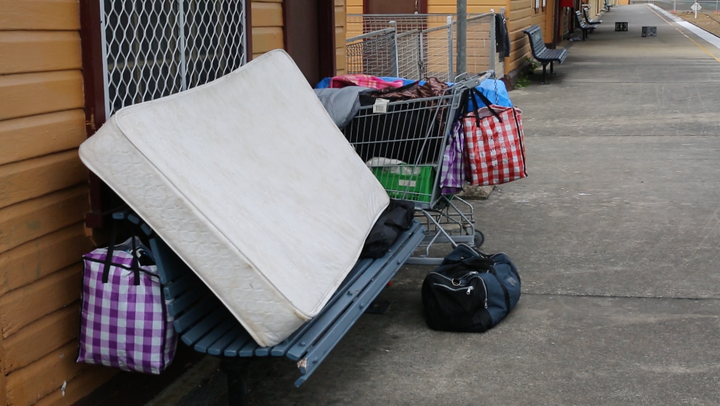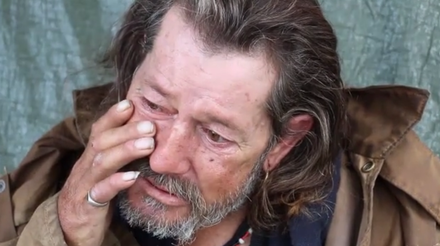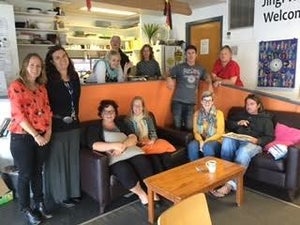
BYRON BAY has the second highest number of rough sleepers in NSW, behind inner-city Sydney.
Over the last decade, Byron Shire has found itself reliant on tourism and the economic benefits that come with it.
But there are pitfalls, too. House prices rival that of Sydney, Paris, and New York City. Rental prices are going up.
Social worker Nicqui Yazdi has been living in Byron Bay for 18 years and has run the Byron Schools Safety Response every year during Schoolies. Recently, she was told that her landlord was looking to sell. She had six months left on her lease before she must move on.
Recently, she was told that her landlord was looking to sell. She had six months left on her lease before she must move on.
Forced to look at Byron’s rental market for the first time in almost two decades, Yazdi has only recently realised the extent of the rental blow-out.
In February, Yazdi wrote an op-ed for the local paper, The Echo, slamming reporting that glamourised the apparent “gypsy” lifestyle of Byron’s homeless people and the difficulties facing locals when it comes to renting.
“Homelessness is not a ‘gypsy’ lifestyle,” she wrote, “and in fact, I’ve never heard anyone refer to them as the ‘gypsy kids’, including themselves.” When we chat, Yazdi can’t remember what she wrote in February, but is more than happy to rattle off her thoughts again.
“Businesses tell you ‘tourism is the mecca’,” she says, “Well it’s also the scourge.”

“I am shocked,” she says. “You’re looking at $2000 a week for a family house, or $550 for a one room shit-box … even for the average room rental it’s $250.”
In 2015, the Gold Coast Bulletin reported that house prices in Byron Bay had rocketed 36.2% in a year. Today, the average house costs just under $950,000.
“Imagine a young person studying,” says Yazdi, as she begins rattling off statistics on youth allowance.
“Kids would need more money than they’re being given just to rent a room, and real estate agents, you know, they don’t have to let young people rent. Why would they?”
Yazdi says there’s a lot of illegal “backyard backpackers” throughout the Byron shire. Houses are jammed with two or three people to a room, and the notion of share-housing has transformed from an act of comfort to one of necessity.
“They don’t have any other option,” she says. “They can’t afford any other option.”
“There are 14-year-olds who are homeless, there are 80-year-olds who are homeless. There are women with children who are homeless … These people are homeless through circumstance. There’s a lot of different things that can make those circumstances, but it’s not because they’re criminals.”
Yazdi believes tourism has defined the “New Byron,” setting up the region for annual peaks in revenue and population that it isn’t built to handle.
“A lot of people will tell you, ‘Oh, Splendour brings in all of this money to the community. Well, where? Now that Splendour and Blues Fest have on-site camping, a great number of those people don’t even come into Byron. In all honesty, the biggest number of people waiting around town are waiting for a bus to go to the Splendour campsite. That’s not a very big boost for the local community.”
Music festivals only visit the area for a handful of days at a time, and the lack of concrete, long-term employment isn’t helped by the roaming economy. “There might be a handful of jobs,” she says. “Splendour only creates a small amount of employment for a small amount of time, for a small number of people. After all that, the council is left to clean it up.”
The increased price of housing in the Byron shire is affecting more than the town’s youth, long-term resident and Mullumbimby Neighbourhood Centre worker Julie Williams tells me at a golf club in Ocean Shores, just a few minutes out from Byron Bay.
“Homelessness doesn’t discriminate,” she says, sitting on the club’s wooden verandah with a glass of wine, looking out to the ocean as whales pass by. She is relaxed and welcoming, but most obviously, passionate.
“It’s really hard to get accommodation,” she tells me. “People rock up here and they think it’s a little bit of paradise, they get here and then they realise there are very few jobs … and if there are jobs, they are very low paid and not a lot have tenure or longevity. Couple that with extremely high rents and, well …”.

Youth employment in the Byron shire is defined by one industry: hospitality.
The myriad of cafes across the coast are employment hubs. Backpackers and travellers have identified Byron Bay as an ideal, Kerouac-ian, On The Road location self-discovery, and it’s made getting a job hard.
“Backpackers, bless them, they’re great,” says Julie, “they’ll get their RSA (Responsible Service of Alcohol certificate), they’ll get their barista qualifications, and then they’ll work for next to nothing, cash in hand … Local kids need to leave the area to get a job and save up and earn a living.”
It’s not hard to find yourself couch surfing with mates after multiple failed attempts to find a place to rent. Williams has worked at the Mullumbimby Neighbourhood Centre for 24 years, with a large chunk of resources not coming from the government or local council.
She says the last two to three years have been “mildly” overwhelming, with an increase in the amount of older women and domestic violence victims adding another complicated layer to the area’s homelessness problem.
Ann Goslentt, who I meet at a volunteer-run kitchen for the homeless and poor, called the Liberation Larder, runs the S.H.I.F.T Project in Byron Bay – a safe-home accommodating five women at a time who are homeless or at risk of homelessness. “It’s an increase in older women,” she says when asked about the demographic of Byron’s homeless population, “some for financial reasons … the older generations get divorced and then don’t necessarily have superannuation. They might not have been in the work force and then they have to get in there and try and find their way around financially. It’s a real struggle.”
Goslentt has worked with the homeless in all the major cities along the east coast of Australia, and applauds the Byron shire community for their efforts. However, she says the stability that would be granted with more government funding is a major asset the area lacks.
“We have a lack of skilled resources and workers … it’s very much based on the economy of Byron Bay, but it’s important to recognise that it’s a very good community. Most people do their best to support people that come here.”
The properties used by the S.H.I.F.T project are all supplied by a philanthropic family in the area. “We’re volunteers. We don’t get any government money,” she says.
For many people who grew up in Byron Bay and have watched the area grow, the solution is becoming clear: either stay in Byron Bay and be homeless, or leave town.
“As far as careers go, you have two options: Hospitality … or hospitality.”
Drew Rogers, a youth and family worker at The Family Centre in Byron Bay, is also at the Larder. He has long hair to his shoulders that screams of the school counsellor from Freaks & Geeks, and, in the least offensive way possible, looks the most stereotypically “Byron Bay” of anyone I’ve met since arriving.
He says kids aren’t set up to move into their adult years fluidly, especially if they want to stay in Byron Bay.
“Working with youth, as well as seeing how they come to be without a home, it’s really hard.”
The competition for rental properties in Byron is a massive detriment, and groups of teenagers having to compete in a market against 27-year-old yuppies with rental history stand no chance.
“As far as careers go,” says Drew, “you have two options: Hospitality … or hospitality.”
Employment has always been competitive in Byron, but the rise of cost in rental properties and the “mental” boom of sites like Airbnb have made finding a house very hard.
Another volunteer, Kim*, tells me there will never be enough resources to help Byron’s homeless community in full.
“The homeless community is always growing,” she says, “and partly, that is the culture of the place. I think it’s quite an inclusive culture, and it’s also a great environment.”
Kim says that historically there has always been a homeless population in Byron, but that more recently the increasing costs in rent have led to more “houselessness” than there has ever been before.
“Houselessness rolls into homelessness,” she says.
“When somewhere is a tourist town and you have that kind of influx of tourism … it puts pressure on the town. Ultimately, Byron is a very small town … If you think about that kind of impact on a relatively small town, it’s quite significant.”
Finally I meet Helen Hamilton, the president of the Liberation Larder. We sit down in the back courtyard of the community centre, which the Larder is connected to. It’s early, so our conversation is interrupted by passing garbage trucks and cleaners vacuuming the halls of the centre.
“At the moment, we do 550 meals a week, as well as community gardens, and an outreach program in Brunswick Heads,” she says.
Helen says there’s a large separation between those with money and a home in Byron, and those without.
“We have the second highest population of homeless outside of Sydney, which is a little staggering when you think about it,” she says.
Rent prices forever increasing have led to people living in cars, unable to afford even a log cabin in a local caravan park. The most pressing issue for Helen is one of safety. Currently, there are no places for people sleeping rough or without a home to seek shelter in Byron.
“There isn’t anywhere to offer low-cost accommodation,” she says. “Somewhere people can go to be safe, to sleep. They need to be safe. It isn’t really safe on the streets.”
Back in Sydney, I call Byron council’s deputy mayor, Paul Spooner. He’s been in Byron Bay for over a decade, and says even his own staff can’t afford to live in the area.
“We’re at crisis point in Byron Bay,” he says. “People are leaving because they can’t afford to live here … if you go to the suburbs, people are living in garages, in cars.
Byron is a place of huge demand and little supply.” Spooner says the council recently gave four blocks of land in Mullumbimby to a community housing provider, with the hope that they will present a proposal in September.
“It will create 20-30 units of community housing,” he says, “some for older people, as well, basically they would be given first preference.”
The rush of older Byron residents struggling for housing is because of the lack of real estate diversity in the area, he says.
“You have traditional three and four bedroom houses, but the demand is actually for places with one or two bedrooms. Especially for older people. As people get older they don’t want to share houses.”
“Byron attracts everybody”, says Spooner. “The millionaires, the billionaires, and the homeless.
Locals expect the upcoming census will find an increased level of homelessness in the Richmond Valley Coastal area: from houselessness, to rough sleepers, to people living in “severely crowded” dwellings.
What’s clear is that locals, and the local council, are acutely aware of the issues. “I don’t think it’s forgotten,” Helen Hamilton told me at the Liberation Larder. “I think it’s in our faces every day.”
With Winter nearly over and the onslaught of Summer tourism fast approaching, the cyclical population of Byron is set to increase again.
I know of many of these ‘homeless’ people. Indeed my son was one for nigh on a year. Many are not homeless by circumstance, in fact quite the opposite. My son found that he was living better than he ever had because of the amount of free food available to the ‘homeless’ and provided by a lot of well meaning people throughout the district. His thoughts, and many of the others was “Why would we go to another region where we cant get free food and we cant live in the bush or on the beach cause the weather conditions are not right? If we moved to another district we would have to rent and buy food.” All his mates were of this thought and had no plans to move anywhere while the going was so good.
If you are in the low income bracket you dont choose to live in Double Bay or Rose Bay or any other expensive suburb because there are no support systems or low cost housing. So why Byron? Cause there are so many community run benefits and systems set up to enable them to keep doing so.
people will gravitate to what’s free…it’s part of the easy option…that’s not to say that there are not genuine homeless peoples in Byron…